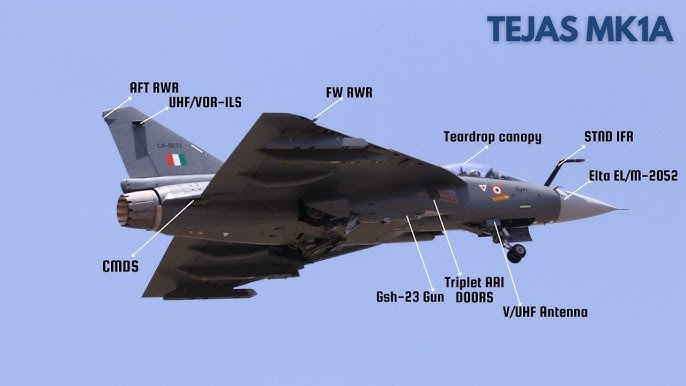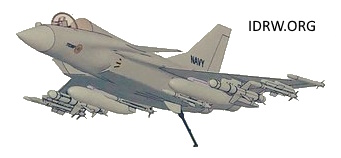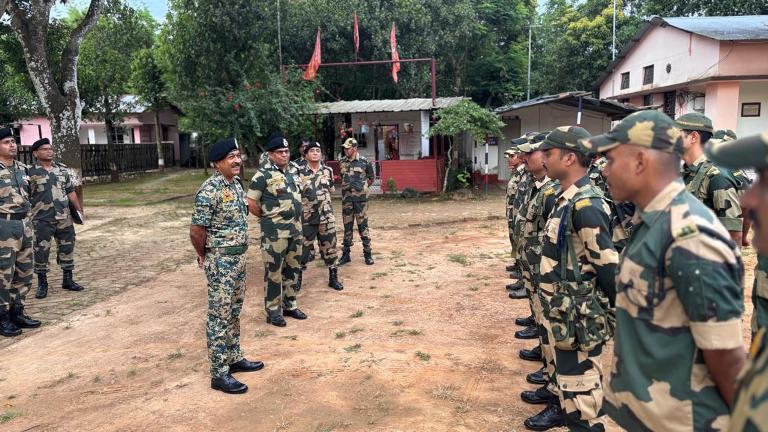SOURCE: RAUNAK KUNDE / NEWS BEAT / IDRW.ORG


India is set to bolster the survivability of its indigenous sub-sonic cruise missile, boasting a 1,500 km range, by integrating a counter-protection system featuring flare technology. According to reliable sources cited by idrw.org, this long-range missile, currently under development for the Indian Army, Air Force, and Navy under the Indigenous Technology Cruise Missile (ITCM) program, will soon be equipped with flares to evade threats from Man-Portable Air-Defense Systems (MANPADS) and close-combat missiles guided by heat-seeking seekers, whether launched from aircraft or ground platforms.
The sub-sonic cruise missile, an evolution of the ITCM initiative, is designed to fly at low altitudes to evade radar detection, enhancing its stealth capabilities for precision strikes. However, this low-flight profile leaves it vulnerable to infrared-guided threats like MANPADS and short-range air-to-air missiles. The addition of a flare system addresses this weakness, enabling the missile to deploy decoys that mimic its heat signature, potentially allowing it to dodge incoming missiles by confusing their seekers.
Continue readingSOURCE: RAUNAK KUNDE / NEWS BEAT / IDRW.ORG


The Indian Air Force (IAF) is set to place an order for a second batch of 97 Tejas Mk1A Light Combat Aircraft (LCA) next year, with production slated to begin in early 2028 and targeted for completion by 2032. According to sources cited by idrw.org, this batch will incorporate further improvements aimed at boosting the indigenous content of the aircraft while addressing initial feedback from the first batch deliveries expected later this year. These enhancements, including new software upgrades and the integration of locally developed weapons systems, are poised to elevate the combat capabilities of the Tejas Mk1A, reinforcing its role as a cornerstone of India’s indigenous defense ecosystem.
A key focus of the second batch is to increase the indigenous content of the Tejas Mk1A, which currently stands at around 60%. Hindustan Aeronautics Limited (HAL), in collaboration with the Aeronautical Development Agency (ADA) and private sector partners, plans to replace several imported Line Replaceable Units (LRUs) with domestically developed alternatives. While specific LRUs targeted for indigenization have not been disclosed, components such as avionics, sensors, and electronic systems are likely candidates, given ongoing efforts under the Aatmanirbhar Bharat initiative to reduce reliance on foreign suppliers.
Continue readingSOURCE: RAUNAK KUNDE / NEWS BEAT / IDRW.ORG


Delhi-based aerospace startup DG Propulsion Private Limited (DPPL) is poised to make a significant mark in India’s defense and aerospace sector as its DG J40 turbojet engine approaches the flight trial stage. Prateek Dhawan, Director of DG Propulsion, announced that the DG J40, a compact and powerful engine designed for unmanned aerial vehicles (UAVs) and defense applications, is nearing a critical milestone in its development, underscoring India’s growing prowess in indigenous aerospace technology.
The DG J40, boasting a thrust capacity of up to 40 kgf (kilogram-force), is a cornerstone of DG Propulsion’s jet engine lineup. Engineered for high performance, the engine offers an optimal balance of power, fuel efficiency, and reliability, making it an ideal choice for high-speed UAVs, loitering munitions, and other defense platforms. Its compact design, high thrust-to-weight ratio, and customizable features—such as adjustable nozzles and water-landing capabilities—position it as a versatile solution for both military and civilian applications.
Continue readingSOURCE: AFI

Hindustan Aeronautics Limited (HAL) Chairman and Managing Director DK Sunil has reiterated that a landmark deal with US defense giant GE Aerospace to co-produce F-414 jet engines in India is on track to be finalized by March 2026, as stated in an interview with PTI. The announcement comes nearly three years after the signing of a Memorandum of Understanding (MoU) between HAL and GE Aerospace in June 2023, highlighting prolonged negotiations that have fueled speculation and uncertainty.
Despite securing an unprecedented 80% Transfer of Technology (ToT), HAL has yet to clarify the reasons behind the delays, raising concerns about the timeline for India’s indigenous fighter jet programs, particularly the Tejas MkII.
Continue readingSOURCE: AFI


The Indian Navy’s ambitious Twin Engine Deck Based Fighter (TEDBF) program, envisioned as a cornerstone of its aircraft carrier modernization, is grappling with significant hurdles. Major design changes, lack of robust support from the Ministry of Defence (MoD) due to the program’s estimated cost of ?14,000 crore, and slow progress in critical design stages have cast doubts on the Navy’s plan to replace its accident-prone MiG-29K fleet by 2035. With the program yet to complete its Preliminary Design Review (PDR) and Critical Design Review (CDR) stages as of June 2025, the Navy may be forced to operate the aging MiG-29K well into the 2040s, posing risks to pilots and operational readiness.
The TEDBF, designed as a 5-minus generation fighter jet with a Maximum Take-Off Weight (MTOW) of 26 tons, was intended to be a cutting-edge deck-based fighter tailored for India’s indigenous aircraft carriers, including INS Vikrant and the planned INS Vishal. Developed by the Aeronautical Development Agency (ADA) in collaboration with Hindustan Aeronautics Limited (HAL), the program aimed for a first flight by 2026, with operational induction by 2035. However, the program’s progress has been hampered by persistent delays.
Continue readingSOURCE: AFI


BSS Materiel Ltd has introduced a groundbreaking advancement in low-flying tactical drone warfare with the Drone AK203, a cutting-edge platform that seamlessly integrates an Assault Rifle—ideally the AK203—with a low-altitude, high-agility drone. This innovative design marks a significant evolution in precision mobility and lethality, redefining the battlefield dynamics.
The Drone AK203 combines the rugged reliability of the AK203 rifle with the maneuverability of a drone, enabling operators to engage targets with unprecedented accuracy and flexibility. Designed for low-altitude operations, the drone’s high-agility features allow it to navigate complex terrains and evade enemy defenses, delivering lethal force where traditional methods fall short. This integration enhances the drone’s capability to execute precise strikes, making it a formidable asset in modern warfare.
Continue readingSOURCE: AFI


In the 1980s, the Aeronautical Development Agency (ADA) embarked on an ambitious project to develop India’s Light Combat Aircraft (LCA), now known as the Tejas. To ensure a robust foundation, ADA contracted four renowned aircraft manufacturers—British Aerospace, Dassault Aviation, Dornier, and Messerschmitt-Bölkow-Blohm (MBB)—to conduct feasibility studies and propose the optimum configuration for the LCA. Each house suggested distinct designs, reflecting diverse engineering philosophies. Following a comprehensive normalization study, three primary configurations emerged as contenders: Aft Tail, Canard, and Tailless Delta. These designs shaped the evolution of the LCA and highlighted the complexity of balancing performance, stability, and manufacturability.
The Aft Tail configuration features a conventional layout with a single vertical stabilizer and horizontal tail surfaces located at the rear. This design, favored by some studies for its simplicity and proven stability, allows for effective control and maneuverability. It resembles traditional fighter aircraft, offering a reliable platform for integration with advanced avionics and weapons systems. The Aft Tail design was seen as a safe choice, leveraging established aerodynamic principles to ensure predictable flight characteristics.
Continue readingSOURCE: PTI


India and South Africa have exchanged two agreements in the domain of submarine cooperation during a key meeting in Johannesburg as both sides sought to further strengthen bilateral defence ties, according to the defence ministry.
Defence Secretary Rajesh Kumar Singh led an Indian delegation to South Africa for the 9th Joint Defence Committee meeting held in Johannesburg on June 23 and 24, the ministry said in a statement on Tuesday.
Continue readingSOURCE: PTI


Iran on Wednesday expressed “gratitude” to India’s “freedom-loving” citizens, political parties, institutions and others who stood by Tehran in the face of military attacks on it by Israel and the US. In a statement, the Iranian embassy said it appreciates the “genuine and invaluable support” to those siding with Tehran. However, it did not make any reference to the Indian government. The conflict between Iran and Israel escalated following the US bombing of three Iranian nuclear sites on Sunday morning.
US President Donald Trump on Tuesday announced a ceasefire between Iran and Israel. The ceasefire seems to be holding on Wednesday. In its reaction, New Delhi on Tuesday welcomed the ceasefire and said it stands ready to play its part to resolve the situation.
Continue readingSOURCE: PTI


US President Donald Trump on Wednesday repeated his claim that he stopped the conflict between India and Pakistan and told the two countries that America would not do trade with them if continued with the fighting.
India and Pakistan reached an understanding on May 10 to end the conflict after four days of intense cross-border drone and missile strikes.
Continue readingSOURCE: Axiom Space


Axiom Space has signed a Memorandum of Understanding (MOU) with India-based Skyroot Aerospace to explore collaboration opportunities to advance space exploration and access to low-Earth orbit (LEO).
This collaboration further reinforces the growing cooperation between Axiom Space and the Indian space sector. Axiom Mission 4 (Ax-4), which launched June 25 at 2:31 a.m. ET, marks India’s return to human spaceflight and the nation’s first mission on board the International Space Station. This historic mission underscores how Axiom Space is redefining the pathway to LEO and fueling a vibrant space economy for the benefit of every human, everywhere.
Continue readingSOURCE: PTI


The Union Cabinet on Wednesday welcomed the successful launch of the Axiom-4 mission to the International Space Station featuring Indian astronaut Shubhanshu Shukla and three others. Mr Shukla and three other astronauts embarked on a journey to the International Space Station onboard the Dragon spacecraft that was placed in an orbit around the Earth by the Falcon-9 rocket of SpaceX.
“We welcome the successful launch of the Space Mission carrying astronauts from India, Hungary, Poland and the US,” read the resolution adopted at the meeting of the Union Cabinet chaired by Prime Minister Narendra Modi.
Continue readingSOURCE: IANS

India has strongly rejected what it described as Pakistan’s “nefarious agenda” at the United Nations Security Council (UNSC), accusing Islamabad of attempting to deflect attention from its own human rights violations and state-sponsored cross-border terrorism.
India’s Permanent Representative to the UN, Ambassador Parvathaneni Harish, issued a sharp rebuttal during the UNSC’s open debate on Children and Armed Conflict (CAC), calling out Pakistan for misusing the platform and violating the Council’s agenda.
Continue readingSOURCE: IANS


BSF’s Additional Director General (ADG), Eastern Command, Kolkata, on Tuesday visited several Border Outposts (BOPs) and Integrated Check Post (ICP) Agartala-Akhaura and interacted with field commanders and jawans and reviewed operational preparedness, an official said.
A BSF spokesman said that senior IPS officer Aggarwal, soon after his arrival in Agartala on a four-day visit to Tripura, was received at the airport by Ashwani Kumar Sharma, Inspector General (IG), BSF Tripura frontier. Upon his arrival at BSF frontier headquarters, the ADG was accorded a Guard of Honour. Later, he was briefed by the frontier IG Sharma on the operational issues and key strategic matters.
Continue readingSOURCE: IANS


In a series of joint operations in Manipur, the Army and other central and state security forces have arrested 17 extremists of different outfits and recovered 24 different types of arms, a large cache of ammunition and other war-like stores from eight districts, officials said on Tuesday.
A defence spokesman said that the intelligence-based, coordinated joint operations resulted in the arrest of 17 cadres from various hill and valley-based militant outfits. He said that the joint operations were conducted during the past few days in the valley and hill districts of Thoubal, Bishnupur, Kakching, Kamjong, Tengnoupal, Senapati, Imphal East, and Imphal West.
Continue reading